Welcome to the delightful world of composting, where your kitchen scraps become the unsung heroes of your garden! Whether you’re just dipping your toes into gardening or are a seasoned green thumb, transforming everyday waste into nutrient-rich compost is a rewarding endeavor that benefits both your plants and the planet. Composting not only enriches your soil but also reduces landfill waste, making it a crucial practice for sustainable living. By using materials straight from your kitchen, you’ll discover an eco-friendly way to give back to the earth.
In this article, we will guide you through the straightforward process of turning kitchen scraps into garden gold. You’ll learn what materials are ideal for composting, how to balance them for optimal decomposition, and tips for maintaining your compost pile. Whether you have a sprawling garden or a small patio, we’ll show you how to make composting fit into your lifestyle seamlessly. With a little patience and the right approach, you can cultivate a thriving compost heap that will nourish your plants for seasons to come.
By the end of this journey, you’ll see how easy and fulfilling it is to create compost from your everyday waste. Our practical advice and handy tips will empower you to start composting with confidence, regardless of your experience level. Imagine the satisfaction of knowing that those potato peels and coffee grounds are contributing to the lushness of your garden. So, let’s dig in and transform your kitchen scraps into a gardener’s treasure!
Collect Suitable Kitchen Scraps
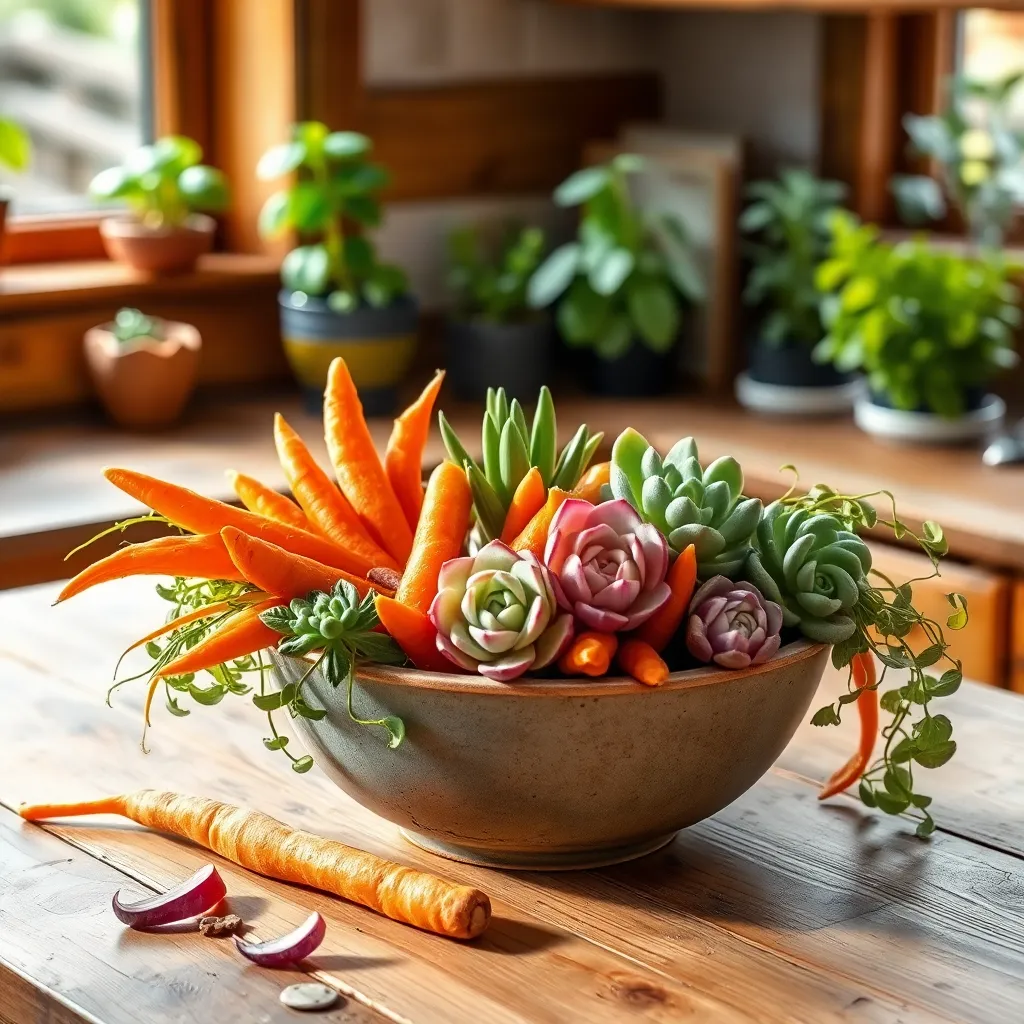
When starting your compost pile, it’s essential to know which kitchen scraps are suitable. Fruit and vegetable peels, coffee grounds, and eggshells are excellent additions that decompose quickly and add vital nutrients to your compost.
To maximize the effectiveness of your compost, ensure that scraps are cut into smaller pieces. This increases the surface area, allowing microorganisms to break them down more efficiently.
Avoid adding meat, dairy, and oily foods to your compost, as they can attract pests and create odors. Instead, focus on using plant-based scraps, which are safer and more effective for home composting.
For more advanced composting, consider adding a balance of green and brown materials. Green materials like fruit peels provide nitrogen, while brown materials like dried leaves add carbon, creating an ideal nutrient balance for decomposition.
Choose a Composting Location
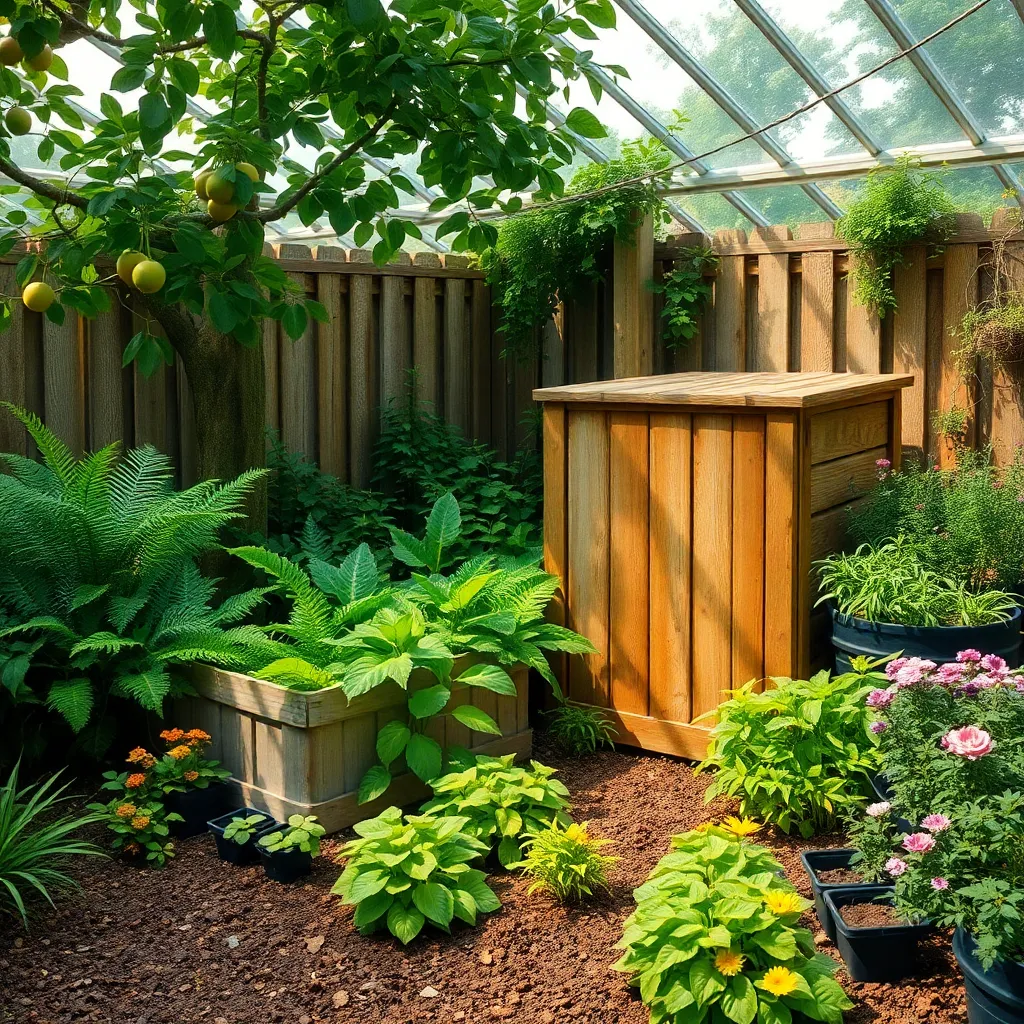
Choosing the right location for your compost pile is crucial for successful composting. Look for a spot that is convenient yet out of the way, so it’s easy to access without being an eyesore in your garden.
Avoid placing the compost pile too close to your house or outdoor living areas. This helps minimize odors and keeps your home free from any unwanted pests that might be attracted to the decomposing materials.
Consider the amount of sunlight and shade the area receives throughout the day. A mix of sunlight and shade is ideal, as too much direct sunlight can dry out the pile, while complete shade might slow down the composting process.
Ensure the location has good drainage to prevent water from pooling around the compost, which can lead to a soggy, anaerobic environment. A well-drained spot ensures your compost remains healthy and decomposes effectively, allowing for faster breakdown of materials.
Layer Organic and Brown Materials
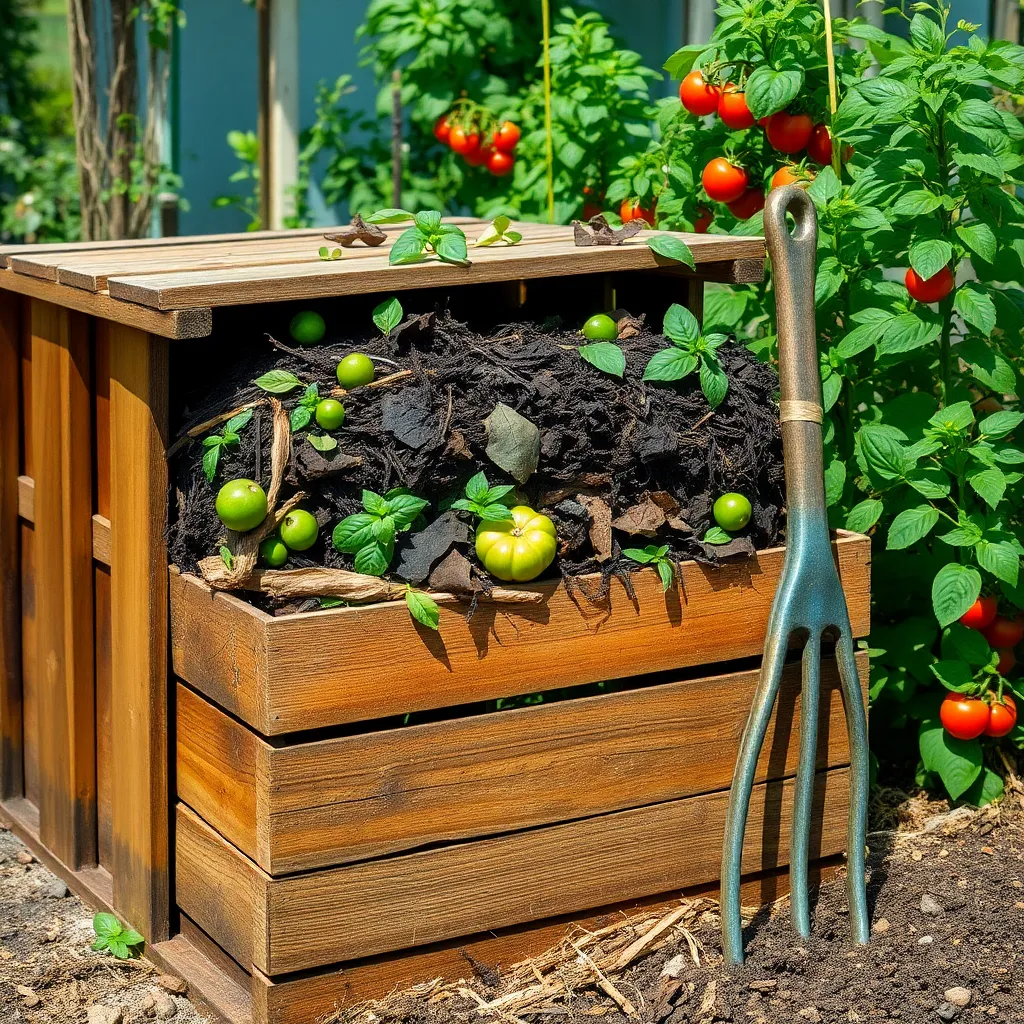
To create rich, fertile compost, it’s crucial to layer organic and brown materials effectively. Begin with a layer of coarse materials such as small branches or straw to aid in aeration and drainage at the base of your compost pile.
Next, add a layer of kitchen scraps, which are typically rich in nitrogen and include items like fruit and vegetable peels, coffee grounds, and tea bags. Balance this nitrogen-rich layer by adding an equal volume of brown materials such as dried leaves, shredded paper, or cardboard, which provide the necessary carbon.
Maintaining a proper balance between these green and brown materials is vital for efficient composting. Aim for a ratio of about three parts brown material to one part green, as this ratio helps to create the ideal conditions for microbial activity.
As you continue to add layers, periodically turn the compost to facilitate oxygen flow, which accelerates decomposition. Consider using a pitchfork or a compost aerator tool to mix the layers thoroughly, ensuring the materials are evenly distributed throughout the pile.
Maintain Moisture and Aeration
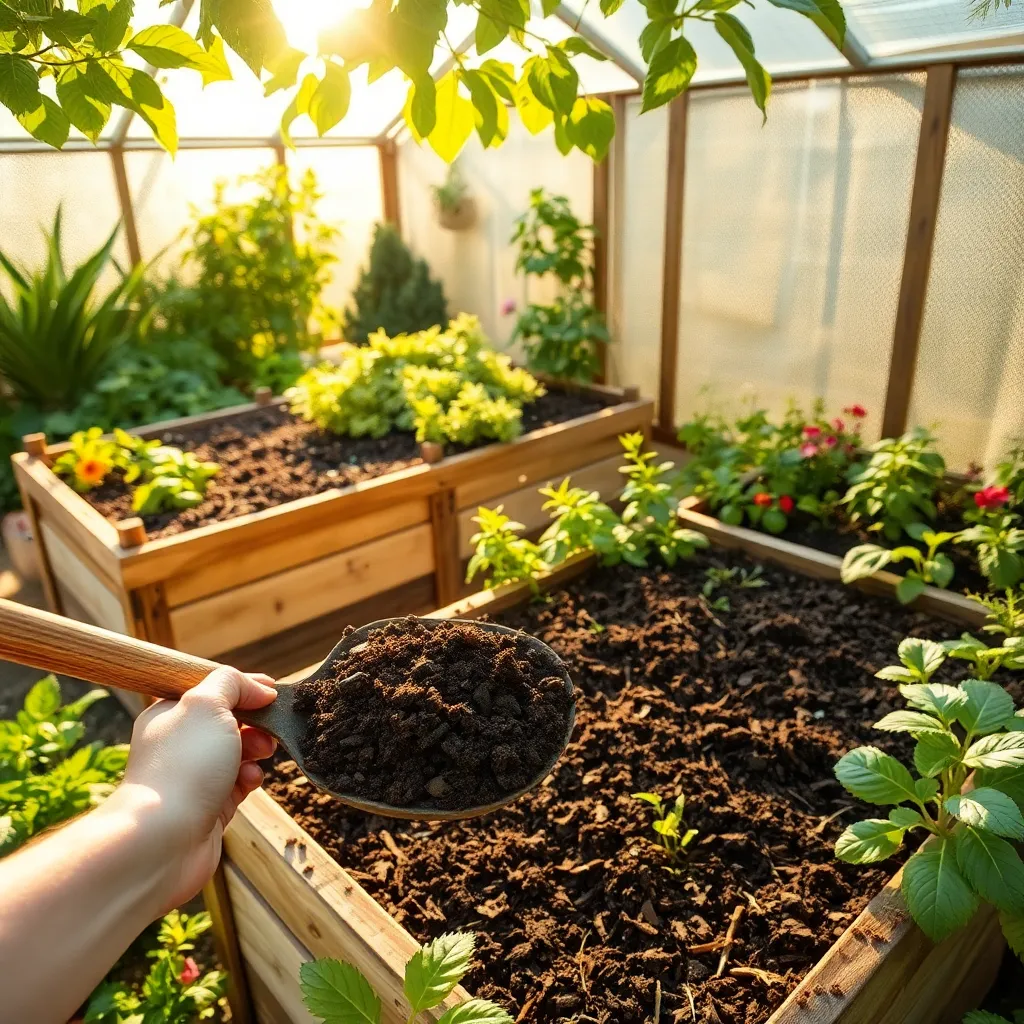
Maintaining the right moisture level in your compost pile is crucial for efficient decomposition. Aiming for a consistency similar to a damp sponge can help, as it provides the ideal environment for microbes to thrive.
To achieve this, periodically check the moisture level by grabbing a handful of compost and squeezing it. If water drips out, it’s too wet; if it crumbles apart, it’s too dry, and you should add some water.
Aeration is equally important as it ensures that aerobic bacteria, which are essential for breaking down organic matter, can function effectively. You can improve airflow by turning the pile with a pitchfork every couple of weeks, which also prevents foul odors.
Consider adding coarse materials like straw or small twigs to enhance airflow. These materials help create pockets in the pile, which allow oxygen to circulate more freely.
Monitor and Turn Compost Regularly
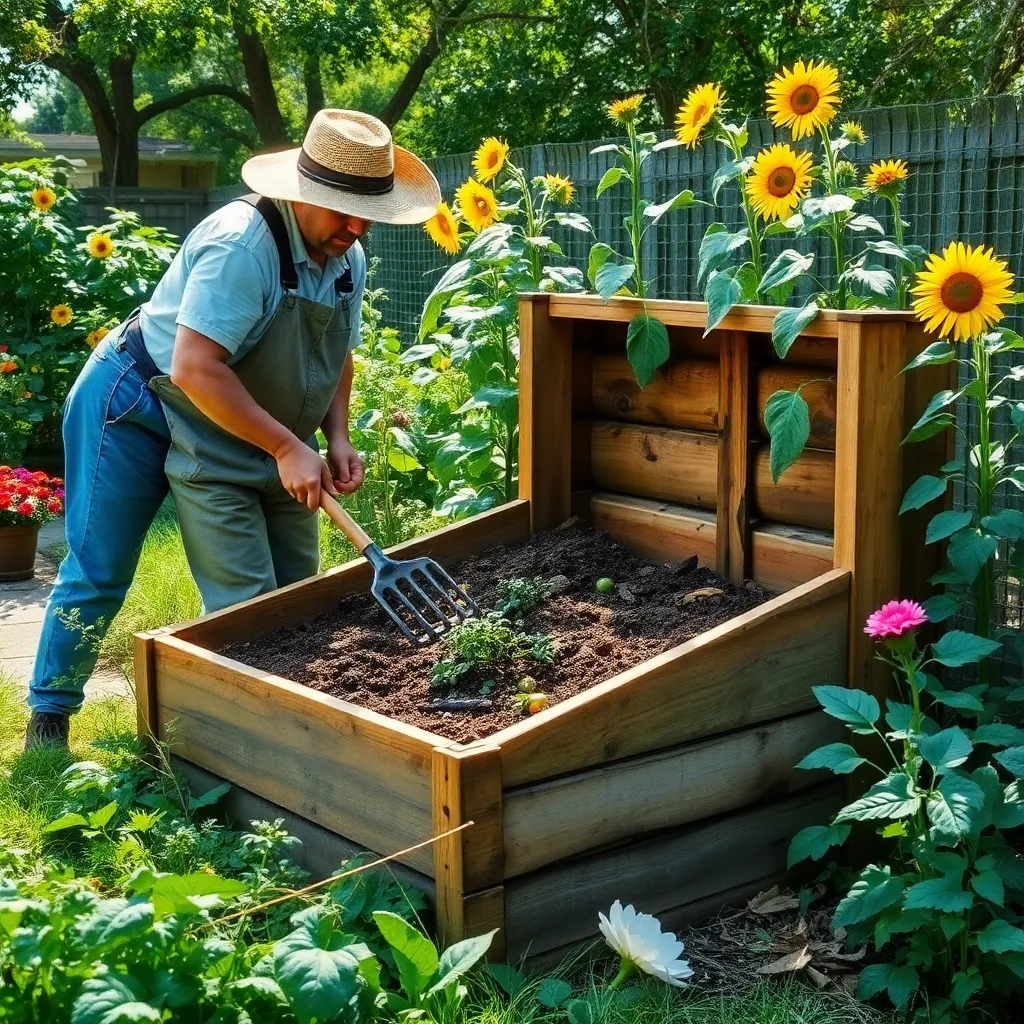
Regularly monitoring and turning your compost is crucial for effective decomposition. Aim to turn your compost pile every 1 to 2 weeks to introduce oxygen, which helps break down materials faster.
Consider using a pitchfork or compost aerator to make the task easier and more efficient. Turning your compost not only aerates the pile but also helps redistribute moisture and heat, which are key components for active composting.
As you turn the pile, ensure that the outer, less decomposed materials are moved to the center. This will help maintain a more consistent decomposition rate throughout the pile.
Pay attention to the temperature of your compost pile, which can indicate how well the decomposition process is progressing. A properly maintained compost heap should feel warm to the touch, ideally between 120°F and 160°F.
If you find that the pile is cooling down, it might be a sign that it needs more green materials, like fruit and vegetable scraps, to boost nitrogen content. On the other hand, if the compost smells unpleasant, it might be too wet or lacking oxygen, so turning it will help correct these issues.
Conclusion: Growing Success with These Plants
In wrapping up our exploration of transforming kitchen scraps into compost, we’ve uncovered five essential relationship concepts that mirror the nurturing of our personal bonds. First, we learned the importance of communication, akin to regularly turning your compost pile for optimal results. Then, we highlighted patience, reminding us that just as composting takes time, so does deepening our connections. We also touched on balance, ensuring that our relationships, like our compost, maintain a healthy mix for growth. Trust came forth as we discussed letting the natural process unfold, and finally, adaptability reminded us to adjust our efforts as needed.
As your actionable next step, begin by creating a small compost bin, inviting your partner or family to contribute. This shared activity can deepen your connection and reinforce these relational principles.
Don’t forget to bookmark this article as a handy guide; refer back to it as you cultivate both your compost and your relationships. Remember, the seeds of today, when tended with care, grow into the flourishing relationships of tomorrow. Embrace this nurturing journey, and watch how it enriches every aspect of your life.
